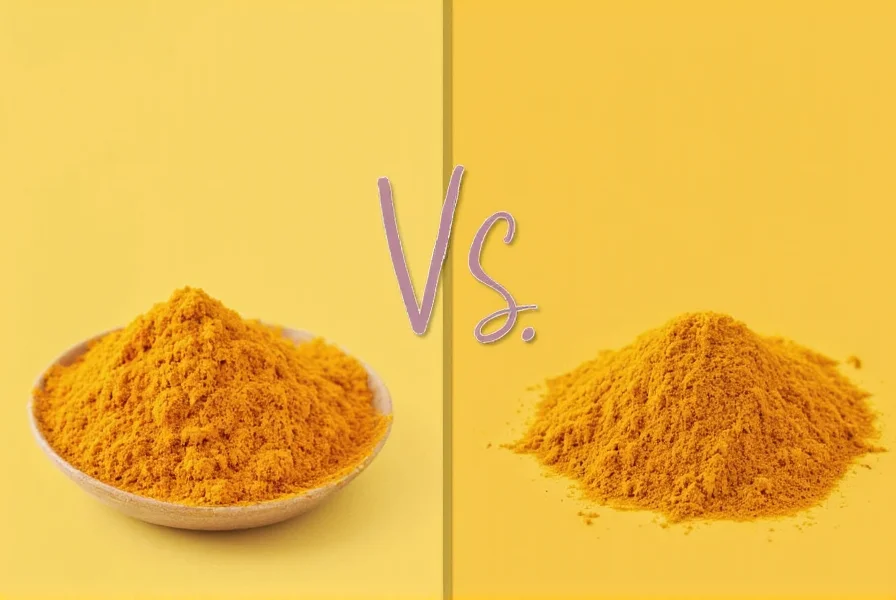When exploring natural health remedies, many people encounter confusion between turmeric and curcumin. This misunderstanding often stems from marketing practices that use these terms interchangeably, despite their fundamentally different natures. Turmeric is the vibrant yellow-orange spice commonly used in cooking, particularly in South Asian cuisine. Curcumin, however, represents just one of the hundreds of chemical compounds found within turmeric, specifically belonging to a group called curcuminoids.
What Exactly Is Turmeric?
Turmeric (Curcuma longa) is a flowering plant in the ginger family, native to Southeast Asia. The part used as a spice is the plant's rhizome (underground stem), which is boiled, dried, and ground into the familiar yellow powder. Whole turmeric contains approximately 2-8% curcuminoids by weight, with curcumin being the most prominent and studied of these compounds.
Traditional culinary and medicinal uses of turmeric span thousands of years across various cultures. In Ayurvedic medicine, turmeric has been employed for its purported anti-inflammatory and antioxidant properties. The whole spice contains not only curcuminoids but also essential oils, proteins, resins, and other phytochemicals that may contribute to its overall effects.
Understanding Curcumin: The Active Compound
Curcumin is the principal curcuminoid in turmeric, responsible for its distinctive yellow color. Scientific research has primarily focused on curcumin due to its potential health benefits, including anti-inflammatory and antioxidant properties. However, curcumin represents only about 75% of the total curcuminoids in turmeric, with demethoxycurcumin and bisdemethoxycurcumin making up the remainder.
One significant challenge with curcumin is its poor bioavailability when consumed alone. It's rapidly metabolized and eliminated from the body, which is why many supplements combine curcumin with substances like piperine (from black pepper) to enhance absorption. This limitation has led to the development of various curcumin formulations designed to improve its effectiveness.
| Characteristic | Turmeric (Whole Spice) | Curcumin (Compound) |
|---|---|---|
| Nature | Whole plant rhizome, dried and ground | Single bioactive compound |
| Curcuminoid Content | 2-8% total curcuminoids | Pure compound (100%) |
| Other Components | Essential oils, fibers, other phytochemicals | None (isolated compound) |
| Bioavailability | Naturally lower due to matrix | Very low unless enhanced |
| Typical Use | Culinary spice, traditional medicine | Supplements, clinical research |
Why the Confusion Exists
The confusion between turmeric and curcumin largely stems from marketing practices in the supplement industry. Many products prominently feature "turmeric curcumin" on their labels, creating the impression they're synonymous. In reality, these supplements typically contain concentrated curcumin extracted from turmeric, often standardized to a specific percentage.
When examining supplement labels, look for details about standardization. A quality product might state "turmeric extract standardized to 95% curcuminoids," indicating it's primarily curcumin rather than whole turmeric. Understanding this distinction is crucial when comparing products and evaluating research findings.
Health Implications of the Distinction
The difference between whole turmeric and isolated curcumin has significant implications for health applications. Research suggests that the various compounds in turmeric may work synergistically, a concept known as the "entourage effect." Some studies indicate that whole turmeric might offer benefits beyond what isolated curcumin provides, though more research is needed in this area.
When evaluating scientific studies, note whether they used whole turmeric or isolated curcumin. Results from curcumin studies cannot be automatically applied to whole turmeric consumption. For example, many clinical trials use highly concentrated curcumin doses (often 500-2,000 mg) that would require consuming impractical amounts of the whole spice to achieve equivalent levels.

What to Look for in Products
When selecting turmeric products, understanding the labeling is essential. Whole turmeric powder should simply list "turmeric" as the ingredient. Curcumin supplements will typically specify "turmeric extract" or "curcumin" and often indicate the percentage of curcuminoids.
For those seeking the potential health benefits associated with curcumin, look for products that address bioavailability issues. Formulations with piperine, liposomal delivery systems, or nanoparticle technology may offer better absorption. However, remember that higher curcumin concentration doesn't necessarily mean better efficacy if the body cannot properly absorb it.
Common Misconceptions Clarified
One widespread misconception is that "turmeric curcumin" represents a superior form of the compound. In reality, this is simply marketing language for curcumin extracted from turmeric. Another common error is assuming that all the health benefits attributed to curcumin apply equally to culinary turmeric use.
It's also important to recognize that while curcumin has been extensively studied, turmeric as a whole food has different properties. Consuming turmeric in food provides a complex mixture of compounds that may interact differently in the body compared to isolated curcumin supplements.
Practical Recommendations
For culinary use, standard turmeric powder provides flavor, color, and some health benefits as part of a balanced diet. To enhance absorption when using turmeric in cooking, combine it with black pepper and a healthy fat, as these can increase curcumin bioavailability.
If considering supplements for specific health concerns, consult with a healthcare provider to determine whether whole turmeric or concentrated curcumin would be more appropriate for your needs. Remember that supplements are not regulated as strictly as pharmaceuticals, so choosing reputable brands with third-party testing is crucial.
Conclusion
Understanding the difference between turmeric and curcumin is fundamental for making informed choices about natural health products. Turmeric is the whole spice with a complex composition, while curcumin is a single compound within it that has been the focus of much scientific research. Neither is inherently "better"—they serve different purposes and offer distinct benefits. By recognizing this distinction, consumers can better evaluate product claims and research findings related to these popular natural remedies.










 浙公网安备
33010002000092号
浙公网安备
33010002000092号 浙B2-20120091-4
浙B2-20120091-4